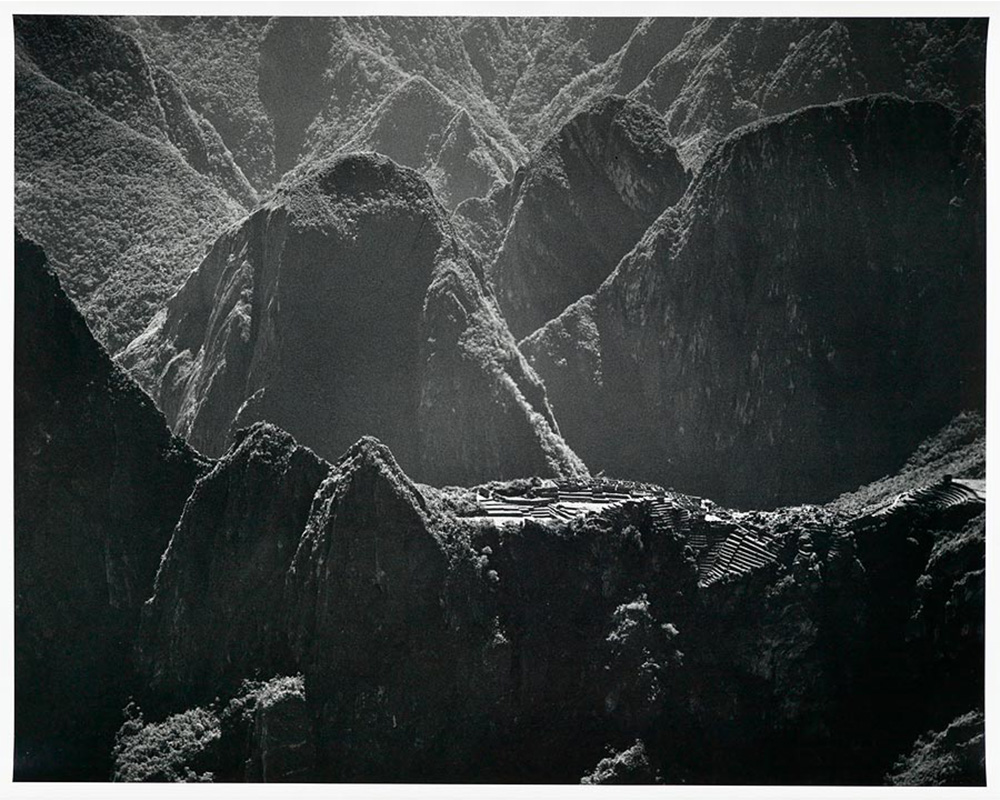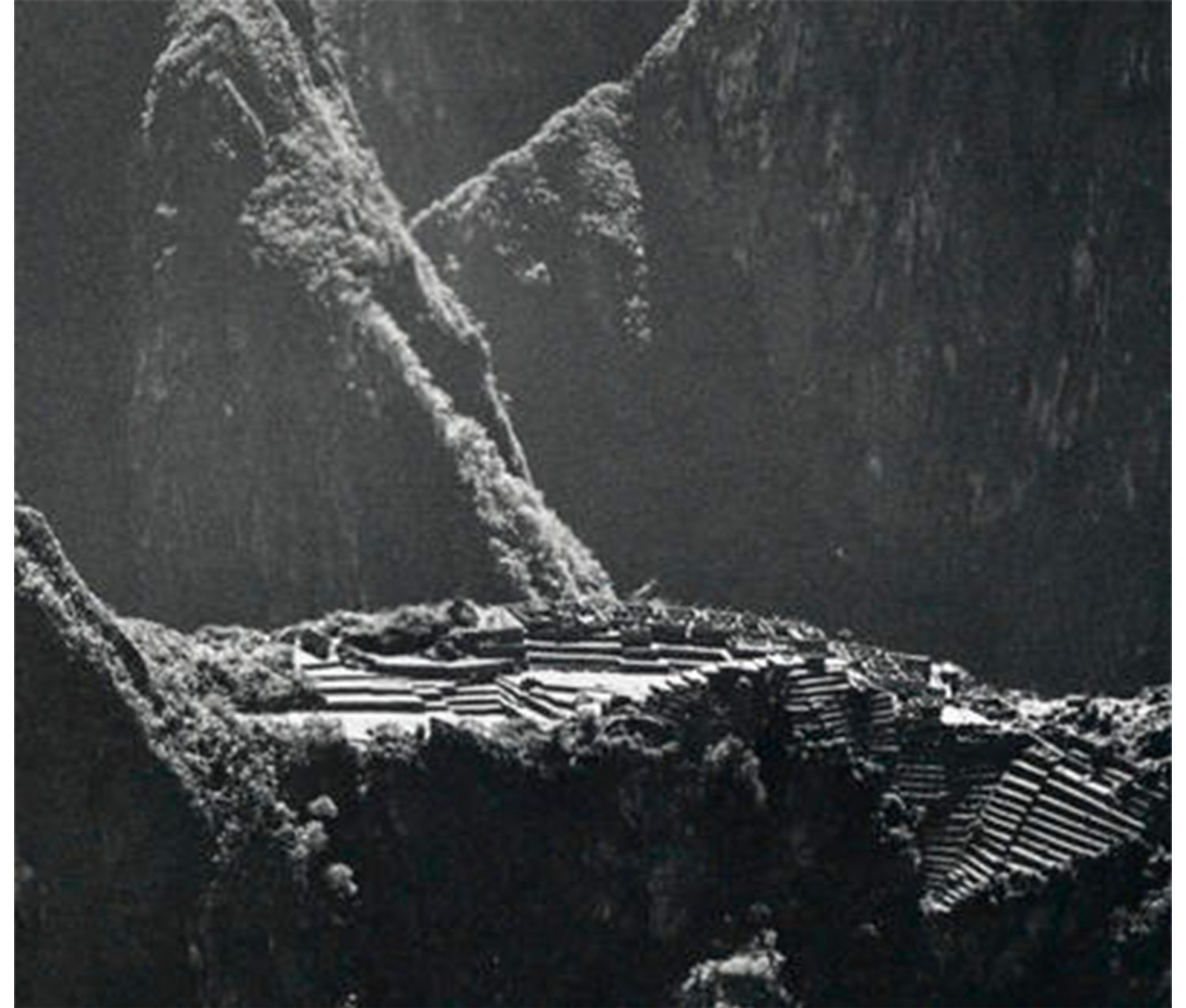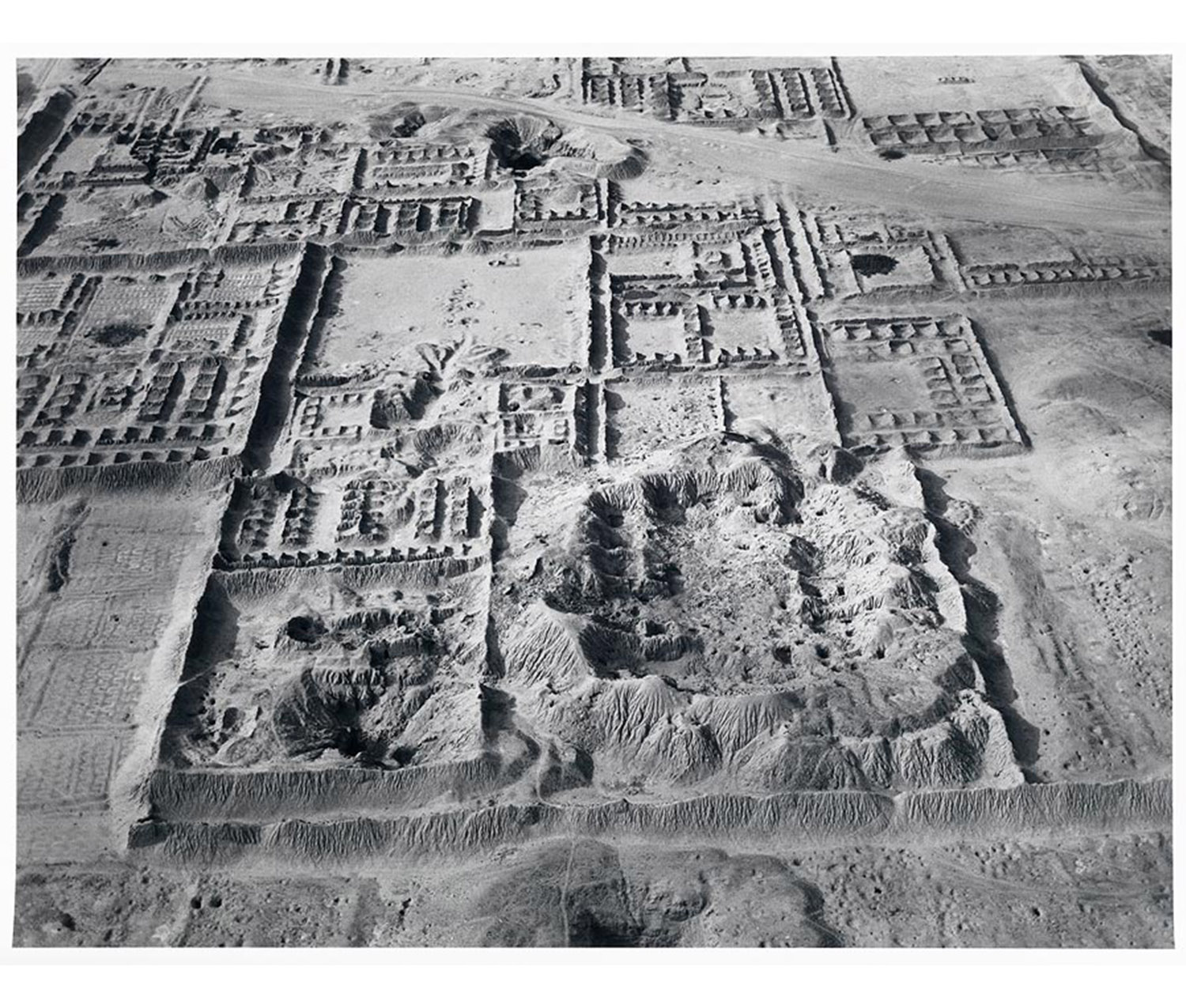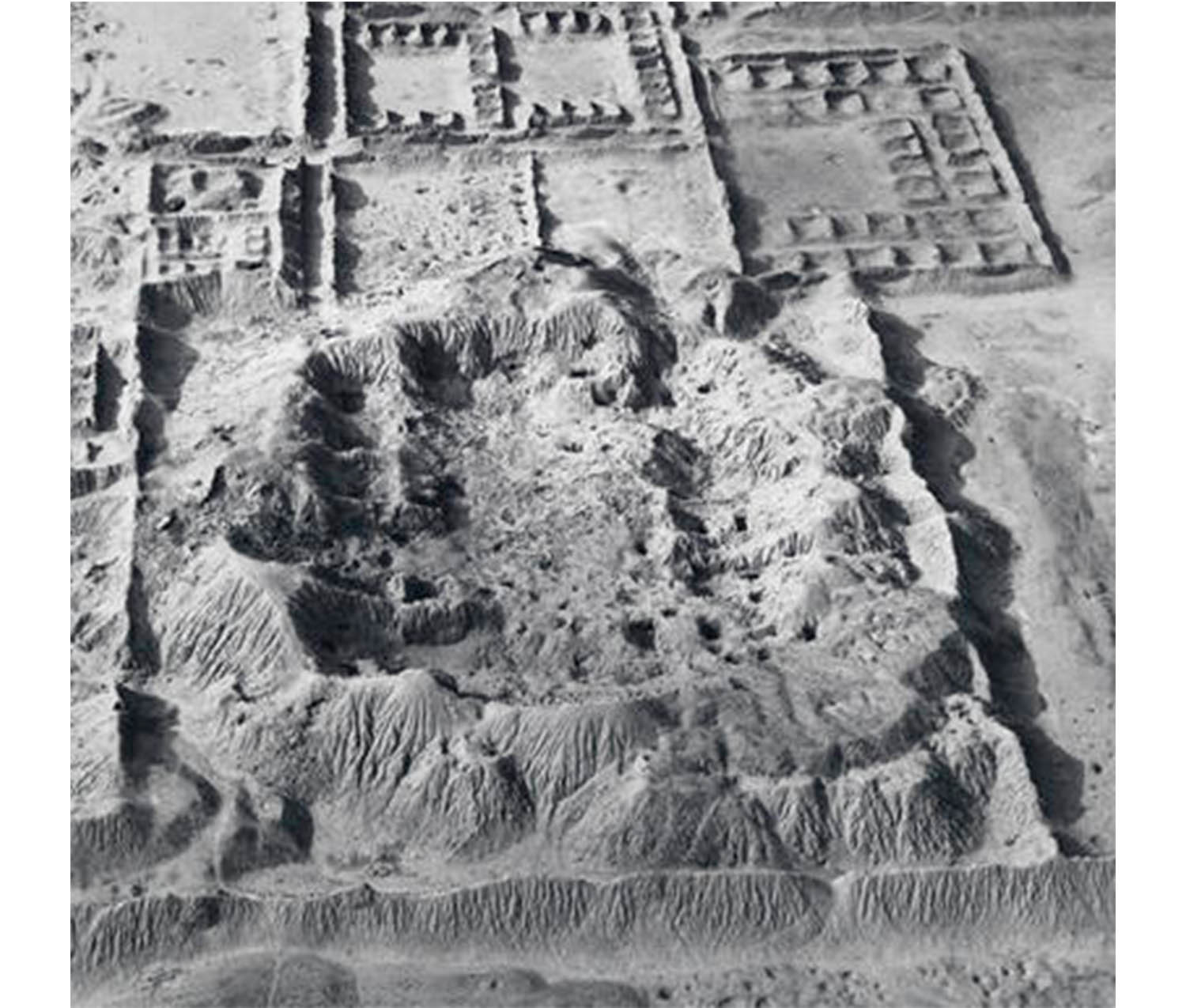
Collecting the Past: Marilyn Bridges
Guest blogger Saraphina Masters is a Smith College student, class of 2017, majoring in Classical Studies and Art History. She was the 2013-2015 STRIDE Scholar in the Cunningham Center for Prints, Drawings, and Photographs. The original version of this work was written for Collecting the Past: Art and Artifacts of the Ancient Americas. This course was offered Spring 2015 by Dana Leibsohn, Priscilla Paine Van der Poel Professor of Art.
In 1976, during a trip to Peru, Marilyn Bridges flew in a small plane for the first time over the Nazca lines. She had previously taken photographs for travel publications but had now discovered a type of photography that would define the rest of her career. Within a year of that formative flight, Bridges exhibited her first solo show at the Museum of Natural History in New York. From there, Bridges traveled around the world to capture images of ancient archeological sites from a plane. In doing so, she offers a new perspective on famous structures, such as the Greek Acropolis and the remains of pre-colonial South American cultures such as the Nazca and the Inca.

Detail of Machu Picchu, Peru
Though she is a licensed pilot, Bridges does not fly while photographing. Instead, she works closely with the pilot to reach the angle and position for her shots. Hers is a technically difficult process for both the pilot and the photographer. The plane must almost stall in order for Bridges to obtain clear shots, even when she uses extremely fast shutter speeds on her camera. To avoid her subjects being so distant they are perceived as abstraction, Bridges flies no higher than 1000 feet above the ground and as low as 200 feet. A complicated and hazardous process, it provides results that elevate landscapes into the realm of fine art.

Marilyn Bridges. American, born 1948. Chan Chan, 1989. Gelatin silver print. Gift of Nicole Moretti Ungar, class of 1982, and Jon Ungar. SC 2009.49.14.
Marilyn Bridges’ style can be characterized by signal traits that appear repeatedly in her work. The dramatic shadows cast by her subjects reveal their identity, and in her own words, “shadows give away the secrets of what’s down there”. Bridges uses shadows to convey what is there: the subject, by highlighting what is not: light. Her attention to strong contrasts between light and dark creates pathos within her work. The obvious distance and isolation of her subjects, both from her camera in the plane and modern civilization on the ground, is made clear in her photographs. Bridges presents an inescapable awareness of the impressive age of the ruins that she captures.

Detail of Chan Chan
Marilyn Bridges will not be the last photographer to take to the sky for arresting visual images and she is certainly not the first. Aerial photography in the Americas began with a detour by renowned American aviator Charles Lindbergh. While flying over the northeastern Yucatán, he spotted mounds and masonry that were a part of a site of ruins with a diameter of eight miles. One of the first discoveries of the kind by plane in the Americas, this experience captivated Lindbergh who, with the help of his wife Anne Morrow Lindbergh (Smith College Class of 1928), would go on to introduce aerial exploration, and eventually photography, to American archeologists. Unlike the relatively flat surfaces of sites in Europe and the Middle East, the dense and impenetrable forest of Central and South America made it difficult to gain a complete view of a site, making aerial vantage points invaluable.
With its obvious military roots, aerial photography was not immediately perceived as a medium for fine art. By its nature, the practice can be perceived as utilitarian in that it has been used to inform military intelligence, cartographic developments, and archeological discoveries. The pioneers in the field as it shifted towards art, such as Bradford Washburn and William Garnett, were in fact scientists who took aerial images of the wilderness to support their research. However, the realization that these useful, practical images are also aesthetically stunning in their scope and composition was inevitable. One of the first to make the link between the pragmatic practice and its artistic results, Garnett was featured in the first aerial photography exhibition at the International Museum of Photography. What follows this breakthrough is a rich medium that unites science, technology, and art.